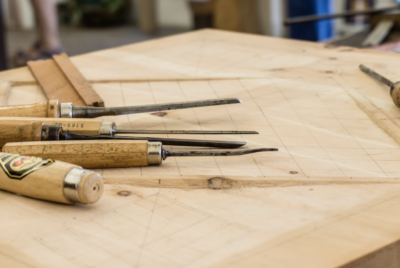Balsa Woodworking: A Beginner’s Guide
Have you ever felt intrigued by woodworking but overwhelmed by the variety of materials and tools it involves? Allow me to guide you through the delightful world of balsa woodworking, where limitless creativity flourishes. Balsa woodworking transcends the typical pastime; it is an artistic expression characterized by its simplicity, adaptability, and deep gratification. Come along as we delve into the fascinating universe of balsa woodworking and learn how this extraordinary material can enhance your crafting journey.
Balsa Wood Explained: The Wonder of Nature’s Lightest Wood
Before we dive into the specifics of balsa woodworking, let’s demystify balsa wood. Originating from the balsa tree (Ochroma pyramidale), this wood is celebrated for its exceptional lightness and softness, making it the lightest option in woodworking. Both hobbyists and professionals treasure it for its versatility, used in everything from model airplanes to detailed carvings.
Advantages of Balsa Woodworking
Choosing the right material is crucial in woodworking, and balsa wood’s unique properties offer numerous benefits. This material isn’t just another type of wood; it’s a revolutionary choice that opens up new possibilities in creativity and craftsmanship. Here’s why balsa wood is a standout choice in the woodworking world.
Revolutionizing Craftsmanship with Lightness
Balsa wood’s most notable feature is its incredible lightness. This characteristic is more than just convenient—it transforms the craft, making woodworking accessible to all ages and skill levels by removing the need for intense physical strength or heavy machinery.
Combining Softness and Strength
Despite its light weight, balsa wood is surprisingly strong, providing a perfect balance of softness and sturdiness. Unlike harder woods, balsa is easy to cut and shape, allowing for detailed work without power tools or complex equipment. This ease of manipulation not only makes the crafting process more enjoyable but also simplifies the toolkit needed, helping to keep costs down.
Essential Tools for Simplicity and Innovation
Balsa woodworking’s appeal also lies in the minimal tools required. Essential items include a sharp knife, a fine-toothed saw, sandpaper, and reliable glue. These basics reduce the barriers for beginners and stimulate creativity and experimentation without the investment in expensive gear.
Starting Your Balsa Woodworking Project
Now that you’re familiar with the charm of balsa woodworking, let’s review the essentials you’ll need to begin and how to choose the best balsa wood for your projects:
Key Tools for Balsa Woodworking
- Sharp Knife: Crucial for precise cutting and shaping.
- Fine-Toothed Saw: Best for cutting thicker pieces cleanly.
- Glue: Select the proper adhesive for durable joints.
- Sandpaper: Important for smoothing and finishing your work.
Choosing the Ideal Balsa Wood
Balsa wood varies in density from light to heavy. Light balsa suits projects where minimal weight is important, while heavier balsa offers more structural strength. Consider both density and grain when picking your wood to ensure the best outcome.
Fundamental Techniques
With your materials and tools ready, mastering a few basic skills will help elevate your projects:
- Precise Cutting: Clean, accurate cuts are crucial. Use appropriate tools and techniques for the best results.
- Skillful Shaping: Add details and depth by shaping your wood with precision.
- Confident Joining: Strong, secure joints are key to durable woodworking. Use suitable glues and allow proper drying times.
Foundation for Creative Growth
By developing these skills, you establish a solid base for limitless creative explorations. Embrace the simplicity and potential of balsa woodworking and watch as your projects take shape, bounded only by your imagination.
Final Reflections
In the world of woodworking, balsa wood is a source of both creativity and innovation. Its lightweight nature combined with its ease of use makes it an ideal medium for all sorts of crafting endeavors. Whether you’re just starting out or are an experienced craftsperson, balsa woodworking provides a fulfilling and enjoyable crafting experience, encouraging both exploration and innovation. So, gather your tools and let your creative journey begin!
For more tips and simple woodworking projects, click here.
FAQs: Solving Balsa Woodworking Queries
- Is balsa wood good for practical items? While not as strong as harder woods, balsa can be used for light, decorative pieces. For more demanding projects, choose denser balsa or reinforce it.
- Can you sand balsa wood? Yes, it sands easily for a smooth finish. Use fine-grit sandpaper lightly to avoid damage.
- What’s the best way to paint balsa wood? Prime the wood first, then use acrylic or enamel paint for vibrant results.
- How to prevent splitting when cutting balsa wood? Use a sharp blade and gentle pressure; for thicker cuts, make several light passes
- Where can I find balsa woodworking patterns or plans? Look in hobby magazines, woodworking books, and online forums.
- Interested in building your own woodworking shop? Here’s where you can learn more about balsa and other projects.




